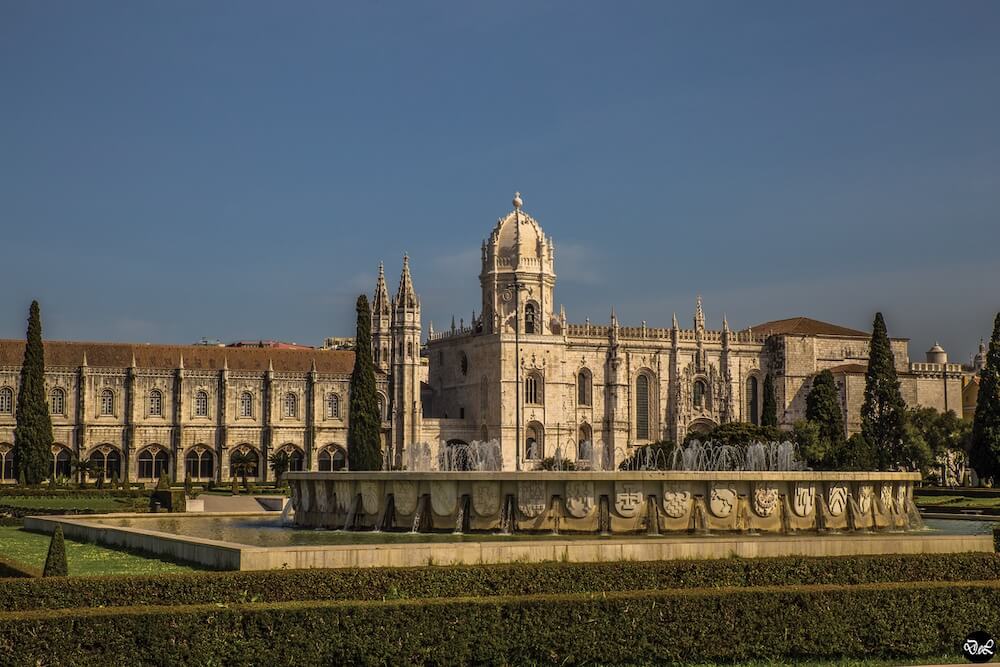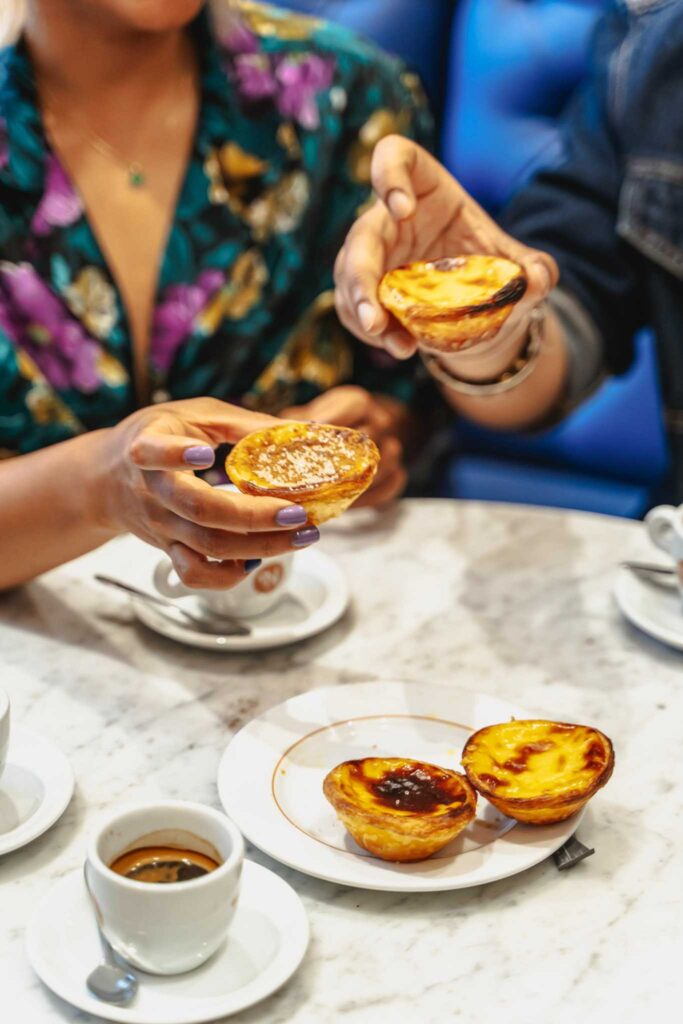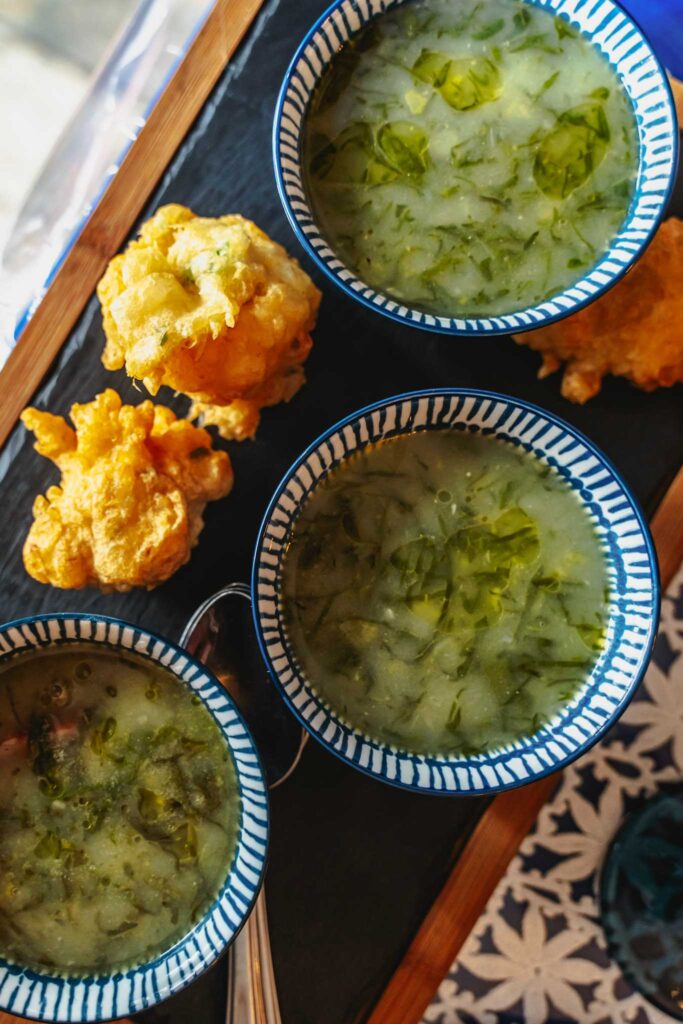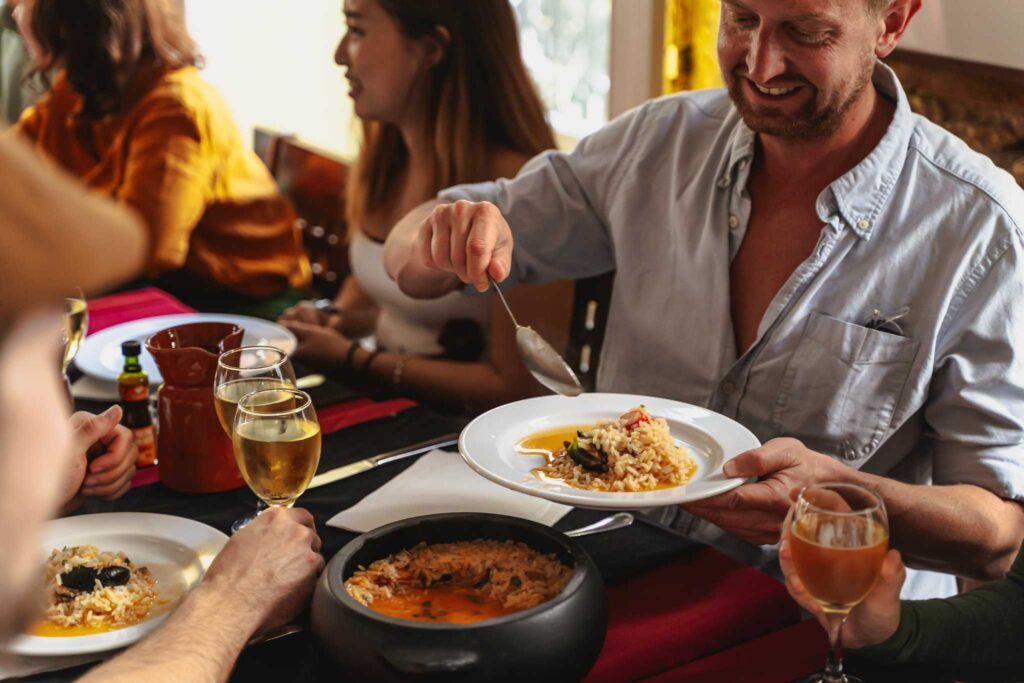
GUIDED TOURFrom €69.00
Lisbon Food Tour
Pastel de Nata (plural Pastéis de Nata) may be Portugal’s most famous export since Cristiano Ronaldo, delighting sweet lovers worldwide. Surprisingly, these delicious egg custard tart pastries were not well-known outside Portugal until fairly recently. So what are Pastéis de Nata? Where can you find the best ones? And what contributes to their increasing fame, aside from their incredible taste?
Monastic Roots of the Pastel de Nata
The origins of Pastel de Nata date back to the 18th century. Before then, they were exclusive to a small group of Catholic monks at the Jerónimos Monastery in Santa Maria de Belém, just outside of Lisbon.
At that time, monasteries and convents utilized a considerable amount of egg whites to launder their garments, and rather than dispose of leftover egg yolks, the monks and nuns would use them to create cakes and pastries. Some of these monastery-made treats were enjoyed by the religious community, while others were sold to sustain the monastery, leading to an explosion of sweet pastry recipes throughout Portugal.

The Liberal Revolution of 1820 led to the dissolution of many religious orders, and in anticipation of the closure of many convents and monasteries, the monks at Jerónimos Monastery began selling Pastéis de Nata at a nearby sugar refinery to generate income. By 1834, the monastery was closed, and the cherished recipe was acquired by an enterprising Brazilian businessman, Domingo Rafael Alves.
Alves bought the recipe for these beloved pastries, and in 1837, production resumed in Alves’ local shop, Antigua Confeitaria. Today, his descendants sell around 20,000 of these sweet treats daily.
Now, the Jerónimos Monastery is a significant tourist attraction and a UNESCO World Heritage Site. However, those who prioritize pastries will likely find their ultimate destination at the nearby Antigua Confeitaria.
What Does Pastel de Nata Taste Like?
With its crispy, flaky layers of pastry and a rich, creamy egg custard filling topped with a sprinkle of cinnamon, the Pastel de Nata is an absolute treat for the taste buds!


The Rising Fame of Pastel de Nata
If you’ve recently discovered the Pastel de Nata, it’s because this delectable Portuguese dessert has only recently gained global recognition.
Back in 2009, The Guardian included Pastéis de Nata in their list of the “50 best things to eat in the world.” While they referred to the custard tarts of Lisbon, it’s clear that they were referring to the famous Pastel de Nata. More recently, in April 2019, Bloomberg featured an article stating that Pastéis de Nata were becoming as appreciated worldwide as the croissant.
As demand surges, more bakeries globally are creating their versions of Pastéis de Nata. However, the best place to experience this custard tart remains Lisbon, the place of its origin.
Experience Authentic Pastéis de Nata & More on Our Lisbon Food Tour!
Are you planning to visit the Portuguese capital? Dive into its culinary scene with our award-winning Lisbon Food Tour.
Recently named one of the world’s best food experiences, this exquisite tour guides you through Lisbon’s celebrated food culture. Treat your palate to presunto, chourico, seafood, and more, all complemented by four local beverages. Relish the country’s favorite drink, Ginjinha, and savor local wines, including the iconic vinho verde or “green wine.”

And of course, no tasting experience is complete without the star of the show: the Pastel de Nata!
Book your spot on our Lisbon Food Tour now!

Alexander Meddings is a professional copywriter and holds a postgraduate degree in Roman history from the University of Oxford. After completing his MPhil, he moved to Florence and then Rome for research, following his passion at the source. He now works in the travel industry as a writer and content consultant, and in education as a university lecturer and translator.





